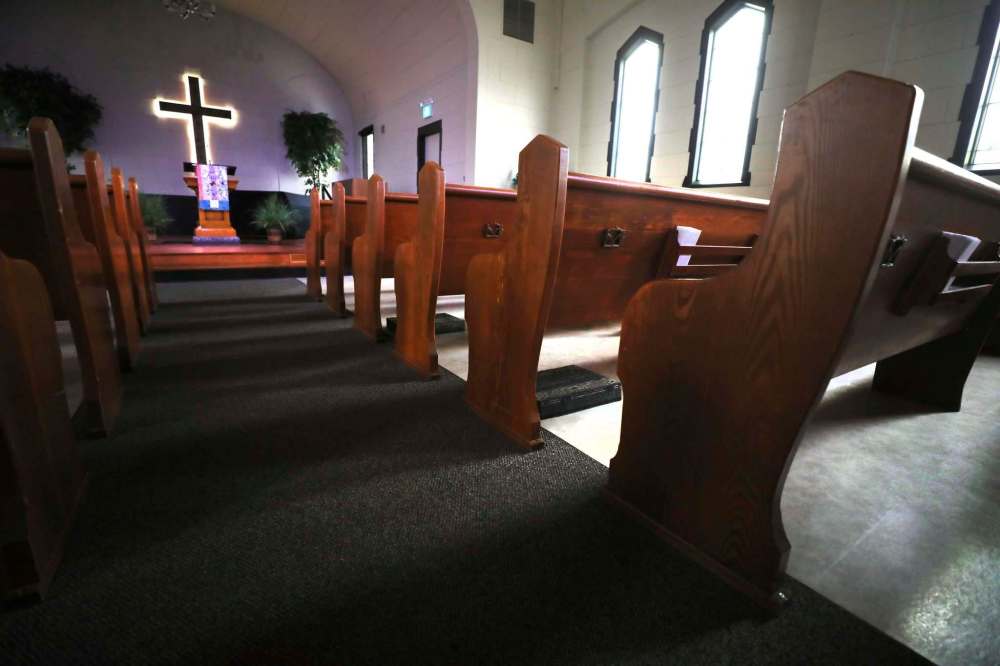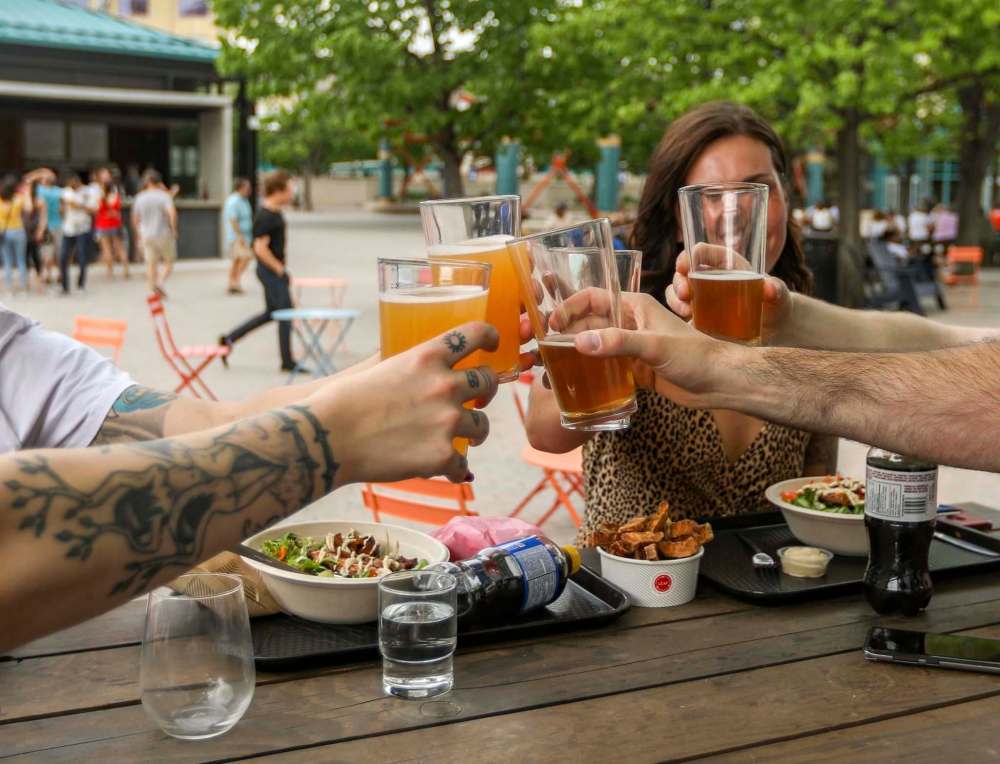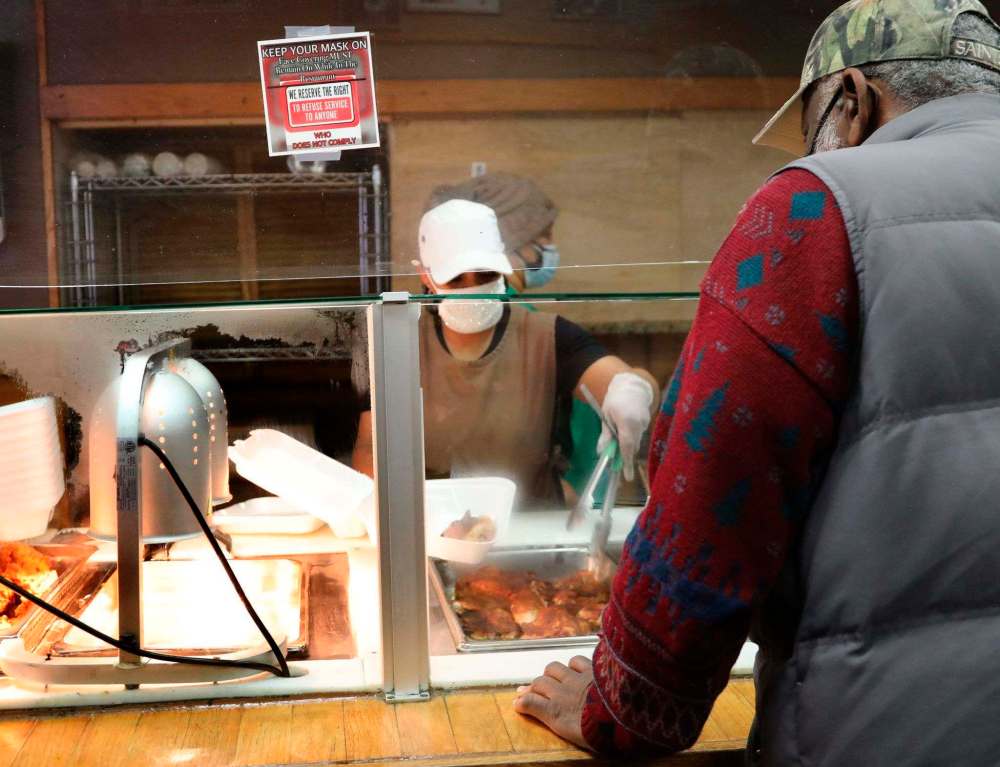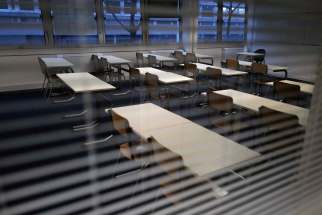Safe or senseless? Epidemiologist examines COVID-19 risks associated with five activities allowed under Manitoba's public health orders
Read this article for free:
or
Already have an account? Log in here »
To continue reading, please subscribe:
Monthly Digital Subscription
$0 for the first 4 weeks*
- Enjoy unlimited reading on winnipegfreepress.com
- Read the E-Edition, our digital replica newspaper
- Access News Break, our award-winning app
- Play interactive puzzles
*No charge for 4 weeks then price increases to the regular rate of $19.00 plus GST every four weeks. Offer available to new and qualified returning subscribers only. Cancel any time.
Monthly Digital Subscription
$4.75/week*
- Enjoy unlimited reading on winnipegfreepress.com
- Read the E-Edition, our digital replica newspaper
- Access News Break, our award-winning app
- Play interactive puzzles
*Billed as $19 plus GST every four weeks. Cancel any time.
To continue reading, please subscribe:
Add Free Press access to your Brandon Sun subscription for only an additional
$1 for the first 4 weeks*
*Your next subscription payment will increase by $1.00 and you will be charged $16.99 plus GST for four weeks. After four weeks, your payment will increase to $23.99 plus GST every four weeks.
Read unlimited articles for free today:
or
Already have an account? Log in here »
Hey there, time traveller!
This article was published 18/03/2021 (1727 days ago), so information in it may no longer be current.
Sitting in church unmasked. Gathering with friends on an outdoor patio. Relaxing in a spa.
All are allowed under Manitoba’s current public health orders.
But how safe are these activities?
As Manitoba prepares to further loosen restrictions, including expanding capacity limits for indoors venues and allowing restaurants to seat people from different households, public-health officials acknowledge there’s risk involved, especially as the province reports dozens of cases involving more contagious COVID-19 variants.
The Free Press spoke with local epidemiologist Cynthia Carr about the risks associated with five activities permitted right now, and how Manitobans can safely get out of the house.
SCENARIO 1: Attending church
Two families sit in a church unmasked, two metres away from each other, for an hour-long service.
“I would say that that is one of the more riskier situations, and not one that I would encourage,” Carr said, particularly as many churches do not have good ventilation, and the layout of pews makes it hard to space people two metres apart.
“Not wearing masks in church, I don’t understand that at all. Particularly given the demographic skew toward older people, I just find that perhaps not an ideal message right now.”
The province has asked places of worship to “discourage congregational singing and chanting” but that’s not banned. Woodwind instruments are similarly not recommended, as they involving blowing air.

“Some of the riskiest situations are indoors, with recirculated air, talking,” Carr said. “Some studies showing that the duration doesn’t even have to be 15 minutes” for infection.
Carr ‘s own relatives have described moving around the church to get communion, which introduces the risk of spread.
“It’s not a situation in which I would be comfortable taking off a mask,” she said.
“My main concern is that people at risk, in terms of the age-group demographics in that setting, and the duration that people are sitting together.”
SCENARIO 2: Sauna time
A local spa allows patrons to be unmasked inside its saunas for 15-minute sessions, with 10 people inside.
“I wouldn’t be in a sauna at all right now,” Carr said. “That’s too many people in an enclosed space where you certainly don’t have ventilation; the whole point of a sauna is to keep that air enclosed and keep it hot.”
Generally, coronavirus particles linger in cooler, drier air like in meat-packing plants. But even hot and humid circumstances pose a risk when fresh and stale air aren’t being exchanged, and it’s almost impossible to wear a mask.

“As you get hotter, you breathe out to kind of cool yourself, and you may not even realize you’re doing it. So that seems to me like more of a risky situation,” she said.
“The more recirculation there is of air, the more risky the situation it is, and the more ventilation the less risky it is. But none of these are zero risk, and none of these are 100 per cent risk.”
SCENARIO 3: Hitting the patio
Six friends from different households are sharing an outdoor patio table for two hours; a dozen glasses are piling up.
“Being outdoors is absolutely an optimal situation,” said Carr, who stressed that most super-spreader events occur inside.
Still, not wearing a mask means people are likely exchanging more droplets, which increases the risk of someone with COVID-19 spreading it to other people.
Alcohol helps people let their guard down, and it’s natural to want to connect with multiple people.
“You’re going to be talking and eating, and lots of things that would encourage respiratory droplets, and kind of easing your vigilance, because you’re chatting and leaning towards each other, or leaning over people to talk to somebody else,” she said.
“It’s the basics of duration of exposure, how close you are to each other and remembering that asymptomatic spread has been shown to be a significant challenge,” said Carr.

A smaller group, confined to your own bubble of contacts, is probably best.
Others have suggested thinking of an outdoor dining space like having someone smoking at a neighbouring table. If the smell of a cigarette would carry over to you, you’re likely exposed to coronavirus particles from an infected person.
“The challenge is that knowing you’re most infectious in the two days before you show any symptoms,” Carr said.
“Even if you’re doing everything right, following the rules and you feel fine, you could be one of those people, unfortunately.”
SCENARIO 4: Dinner for… four?
A couple from the same household is dining at a restaurant indoors; two other patrons are seated two meters away and no one is wearing a mask.
Carr said it’s too cold for most restaurants to keep windows open right now, so air is likely circulating between tables. Coronavirus particles can make the rounds, especially with variants that are more effective at infecting people.

That means it’s best to eat outdoors.
Even indoors, putting your mask on when you’re not eating means less risk, particularly if you get up to go to the washroom.
“Keep your mask on as long as you can. If you’re sitting there two hours, you’re not eating the whole time. If you want to sit and enjoy the company… and put your mask back on, it’s about layers of risk.”
Carr said people should limit these sorts of outings, in general.
“I would encourage people, in any of these scenarios, to err on the side of the layers of caution, and maybe don’t take too many risks at once.”
SCENARIO 5: Bubble buddies
A family has two people over, from a separate household, which is allowed under current public-health orders.
Carr said sitting further apart and keeping visits short will limit risk, but realistically, visitors will move around a home.
“We can talk about distances and duration, but this isn’t a physics exercise,” Carr said. “In real life, you’re not going to sit in a specific place; you’re not going to put little markers on the floor.”
Carr said it’s important that designated contacts stick with the bubble they’ve formed.
“What would be more of a consideration… is communication, and not making assumptions that everybody’s very clear that they’re not visiting other households,” she said.
“Every new person that you come into contact with is what that virus is looking for.”
Keeping healthy
Carr said it’s important Manitobans get out of the house, particularly with people increasingly reporting that they feel lonely or depressed.
“The more you can meet with people outdoors, the better off you are,” she said.
As the weather improves, it’s easy to gather outside with a small number of contacts, keep a distance and wear a mask whenever possible. Warmer weather and more sunlight means virus particles have less chance to linger in the open air.
“We should take advantage of those opportunities, for our mental health, for our physical well-being,” she said. “We need to be out and doing things, and feeling not enclosed in our space.”
Doing so will help keep more dangerous variants from emerging.
“It’s up to us to not let the virus go from person to person because it needs a living person to infect you,” she said. “Replicating is where you get the mutations, when it’s making millions and millions of copies.”
Ultimately, the fundamentals we started to learn a year ago still stand.
“Even with the variants of concern, those layers of protection will still protect — it’s not letting the virus get from person to person, that is really a major part of the solution while we roll out the vaccine program.”
dylan.robertson@freepress.mb.ca
History
Updated on Thursday, March 18, 2021 10:51 PM CDT: Adds web headline









